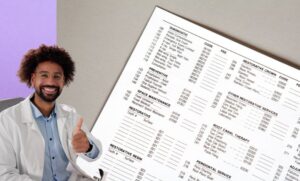In the world of medical billing and coding, the Current Procedural Terminology (CPT) code 99213 holds a significant place. It is a code that healthcare providers use to bill for evaluation and management (E/M) services. In this comprehensive guide, we will delve deep into the 99213 CPT code, exploring its definition, when and how it should be used, and the key elements that play a crucial role in determining the level of service. Whether you’re a medical professional or a billing specialist, understanding this code is essential for accurate billing and reimbursement.
What is the 99213 CPT Code?
The 99213 CPT code falls under the category of E/M codes, which are used to describe the complexity of patient visits. E/M stands for “evaluation and management,” and these codes are used to report services provided by healthcare professionals, such as doctors, nurse practitioners, and physician assistants, during office visits, hospital visits, and other encounters with patients.
Specifically, the 99213 code represents a mid-level office or outpatient visit. It is used when a patient’s medical condition requires a moderate level of medical decision-making and a moderate level of complexity in terms of history and examination. In other words, it is for patients with health concerns that are of intermediate severity.
When to Use the 99213 CPT Code
Choosing the appropriate CPT code is crucial for accurate billing and reimbursement. So, when should you use the 99213 code? Here are some key considerations:
Medical Necessity: The most fundamental criterion is medical necessity. You should only use the 99213 code when the patient’s condition warrants an office or outpatient visit. This means there should be a valid reason for the encounter.
Documentation: Proper documentation is essential. The medical record should reflect the patient’s history, examination, and medical decision-making, which will help determine the level of service.
Time Spent: While time alone should not be the sole determinant, it is still an important factor. Typically, for a 99213 visit, you would spend about 15 minutes with the patient.
Key Elements of the 99213 CPT Code
To bill for a 99213 visit, several key elements must be present and documented in the medical record. These elements include:
- Chief Complaint: The patient’s reason for the visit should be documented. What symptoms or concerns brought them to the office?
- History: The medical history should be reviewed and updated as needed. This includes the patient’s past medical history, family history, and social history.
- Examination: A relevant physical examination should be conducted. This should be tailored to the patient’s complaints and symptoms.
- Medical Decision-Making: This is a critical element. It involves assessing the patient’s condition, ordering tests or procedures as necessary, and developing a treatment plan.
- Case Example: Understanding the 99213 CPT Code in Practice
Let’s walk through a hypothetical scenario to illustrate the use of the 99213 code:
- Patient: Jane Doe, a 35-year-old female, presents with a sore throat and low-grade fever.
- Chief Complaint: Patient complains of a sore throat and fever.
- History: Past medical history is unremarkable. No known allergies. No significant family history. She mentions recent exposure to someone with a cold.
- Examination: Physical examination reveals redness and swelling in the throat, swollen tonsils with white spots, and an elevated body temperature.
- Medical Decision-Making: Based on the examination findings, the healthcare provider diagnoses Jane with tonsillitis, prescribes antibiotics, and recommends rest and hydration.
In this case, the 99213 code is appropriate because it involves a moderate level of decision-making due to the diagnosis and treatment plan. The key elements—chief complaint, history, examination, and medical decision-making—are all present and well-documented.
Proper Documentation Is Key
It cannot be emphasized enough how vital proper documentation is when using the 99213 CPT code. Accurate and thorough documentation not only ensures that you bill correctly but also supports the quality of care provided to the patient.
In addition to the key elements mentioned earlier, here are some tips for effective documentation:
Use Clear Language: Avoid medical jargon that might be unclear to non-medical professionals. Write in a way that is easily understandable.
Be Specific: Provide specific details about the patient’s condition, examination findings, and treatment plan.
Include Relevant Details: If there are any complicating factors or unique aspects of the case, make sure to document them.
Also Read:
Coding Pitfalls to Avoid
While using the 99213 CPT code, there are some common coding pitfalls that should be avoided:
Upcoding: Assigning a higher-level code, such as 99214 or 99215, when the patient’s condition does not warrant it is considered upcoding and can lead to compliance issues.
Undercoding: Conversely, using a lower-level code, such as 99212, when the patient’s condition justifies a higher-level code can result in lost revenue.
Insufficient Documentation: Incomplete or vague documentation can lead to denials and audits. Ensure that all required elements are clearly documented.
Conclusion
Decoding the 99213 CPT code is essential for healthcare providers and billing specialists. It represents a mid-level office or outpatient visit and requires proper documentation of the patient’s history, examination, and medical decision-making. Using this code accurately ensures that patients receive appropriate care, and healthcare providers are appropriately reimbursed for their services.
In summary, the 99213 CPT code is a valuable tool in the world of medical billing and coding, allowing for the accurate representation of patient encounters. By understanding its criteria and documenting patient visits meticulously, healthcare professionals can navigate the complexities of medical coding with confidence and integrity.









